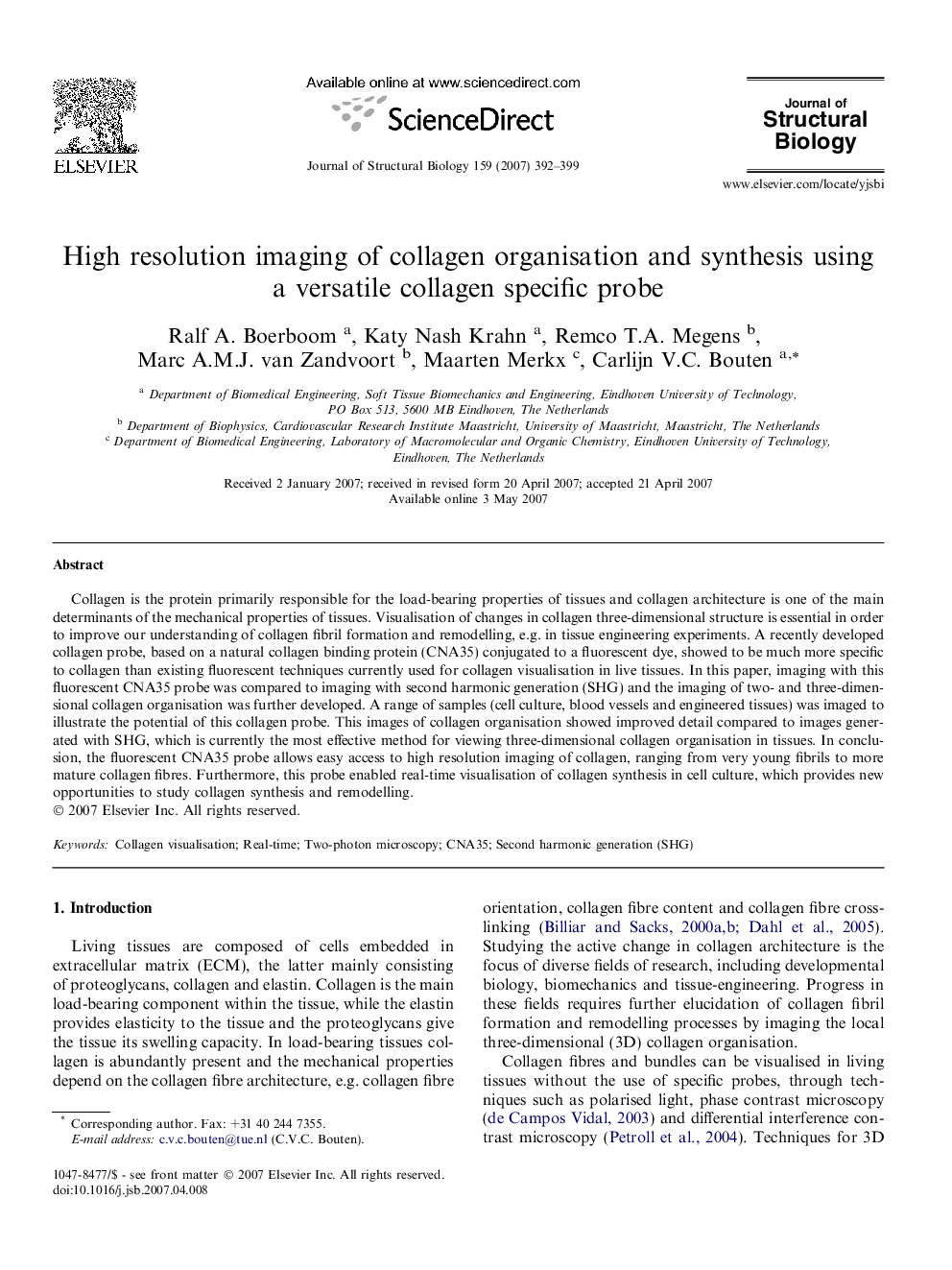| Article ID | Journal | Published Year | Pages | File Type |
|---|---|---|---|---|
| 2829289 | Journal of Structural Biology | 2007 | 8 Pages |
Collagen is the protein primarily responsible for the load-bearing properties of tissues and collagen architecture is one of the main determinants of the mechanical properties of tissues. Visualisation of changes in collagen three-dimensional structure is essential in order to improve our understanding of collagen fibril formation and remodelling, e.g. in tissue engineering experiments. A recently developed collagen probe, based on a natural collagen binding protein (CNA35) conjugated to a fluorescent dye, showed to be much more specific to collagen than existing fluorescent techniques currently used for collagen visualisation in live tissues. In this paper, imaging with this fluorescent CNA35 probe was compared to imaging with second harmonic generation (SHG) and the imaging of two- and three-dimensional collagen organisation was further developed. A range of samples (cell culture, blood vessels and engineered tissues) was imaged to illustrate the potential of this collagen probe. This images of collagen organisation showed improved detail compared to images generated with SHG, which is currently the most effective method for viewing three-dimensional collagen organisation in tissues. In conclusion, the fluorescent CNA35 probe allows easy access to high resolution imaging of collagen, ranging from very young fibrils to more mature collagen fibres. Furthermore, this probe enabled real-time visualisation of collagen synthesis in cell culture, which provides new opportunities to study collagen synthesis and remodelling.
